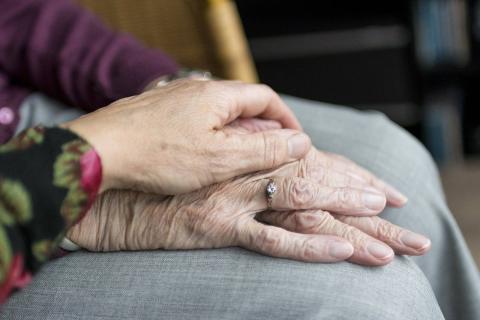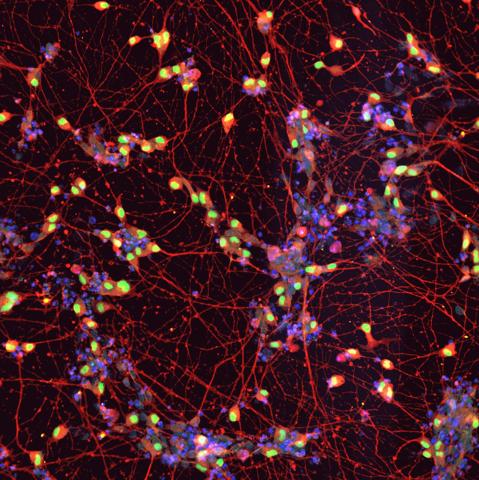Reactions: movement data can predict Parkinson's risk years before diagnosis
Parkinson's disease is usually diagnosed when there is already extensive neuronal damage and symptoms are evident. Now, researchers at Cardiff University in the UK have used movement and sleep quality data from wearable accelerometers and concluded that they can help identify the disease early, years before clinical diagnosis. Although there is no effective preventive treatment, the authors propose that the tool can determine people at risk of developing Parkinson's disease and identify participants for clinical trials of neuroprotective treatments. The results are published in the journal Nature Medicine.

José Luis Lanciego - parkinson movimiento diagnostico
José Luis Lanciego
Senior Researcher of the Gene Therapy in Neurodegenerative Diseases Programme at the Centre for Applied Medical Research (CIMA), University of Navarra
A team of UK researchers at Cardiff University have analysed accelerometry patterns collected from handheld devices and selected from a subgroup of over 100,000 patients randomly selected from the more than half a million patients registered in the UK biobank (UKBB). The main objective is to assess whether such accelerometry data can be considered as a relevant biomarker for the early diagnosis of Parkinson's disease in the general population. These researchers have compared their results with those obtained with other predictive models using other types of biomarkers such as genetic, blood, biochemical, lifestyle and prodromal symptoms. Accelerometry data were collected every hour of the day for seven consecutive days.The results of the analysis show that years before the diagnosis of Parkinson's disease, accelerometric patterns are already altered and, moreover, that no other neurological pathology shows a similar reduction. Another noteworthy observation is the finding that sleep is more impaired in Parkinson's patients, who get out of bed more frequently during the night than the general population. Finally, and due to its importance at a clinical level, it is very relevant to have proven that accelerometry data with portable devices can even predict the conversion time until the diagnosis of Parkinson's disease, that is, how long it will take for a person with altered accelerometric patterns to suffer from this neurodegenerative process.Parkinson's disease is characterised as a slow neurodegenerative process, with an initial diagnosis at around 65 years of age on average, although the neurodegenerative process is known to have started much earlier (even up to 20 years earlier), although the high plasticity of the dopaminergic system can compensate for initial losses of dopamine in the brain, so that typical symptoms do not appear until much later and, like any other disease, it cannot be diagnosed in the absence of symptomatology. There is enormous scientific and clinical interest in identifying patients in prodromal stages (before initial diagnosis), for which aspects such as the presence of REM sleep disorders (patients with such disorders have a high rate of conversion to Parkinson's disease), constipation, alterations in smell (hyposmia), excessive daily sleepiness, orthostatic hypotension and urinary incontinence, among others, have usually been assessed. However, the predictive power of these symptoms has so far been low.The main value of this study is that it has demonstrated that accelerometry measurements obtained using wearable devices (such as a smartwatch or other similar devices) are more useful than the assessment of any other potentially prodromal symptom in identifying which people in the normal population are at increased risk of developing Parkinson's disease in the future, as well as being able to estimate how many years it will take to start suffering from this neurodegenerative process. In these diseases, early diagnosis is to some extent questionable, as early diagnosis is of little use if neuroprotective treatment is not available. However, it is of great importance for use in clinical trials aimed at evaluating the efficacy of new potentially neuroprotective treatments whose main objective is to slow down - and ideally even halt - the clinical progression that typically characterises Parkinson's disease.In today's digital and permanently connected world, the use of portable devices of this type to telemetrically measure different parameters in neurological pathologies is rapidly consolidating. In fact, in June 2022, the Food and Drug Administration (FDA; the regulatory body for the pharmaceutical market in the USA), approved the use of a software called StrivePD Ecosystem as an application for the Apple Watch to monitor different parameters in Parkinsonian patients, such as motor and non-motor aspects, episodes of rigidity and resting tremor, as well as the efficacy of the response to antiparkinsonian medication. Similarly, another company with an interest in digital telemedicine, NeuroRPM (Washington DC, USA), has obtained FDA approval for an Apple Watch app that monitors common symptoms of Parkinson's disease such as bradykinesia (slowness of movement), tremor and dyskinesia (abnormal movements induced by medication). Another Apple Watch app recently approved by the FDA for similar indications is "Parky", developed by the Ankara-based Turkish company H2o Therapeutics. Within the promising field of wearable devices in the context of Parkinson's disease, a somewhat different approach has been taken by Cala Health (California, USA), who have designed a wristwatch capable of sending electrical stimuli to the patient at the onset of tremors so that they can be corrected.
José López Barneo - parkinson movimiento diagnostico
José López Barneo
Professor of Physiology at the University of Seville and head of the Cellular Neurobiology and Biophysics team at the Institute of Biomedicine of Seville (IBiS)
The article is very interesting. It is based on a cohort of thousands of people whose spontaneous movements were measured (with an accelerometer on the wrist) during one week years ago. It has been studied whether this data predicts whether or not they will suffer from Parkinson's later on. A very strong correlation has been found between people who move little and slowly with future Parkinson's disease. These data are specific to Parkinson's and do not predict other neurological diseases (e.g. other dementia such as Alzheimer's or dystonia) or joint diseases (osteoarthritis).
I think the article is of good quality, although it is based on methodologies (cohort selection and specific statistical analyses) that I do not use in my work and do not know well.
It fits very well with current knowledge. Other authors had previously described that slowness of movement is a characteristic feature of some people who subsequently develop Parkinson's disease. These studies had been done in pre-selected cohorts (at risk of developing Parkinson's) and were carried out in a hospital (i.e. they required the intervention of healthcare staff to do the movement analysis). The current study is carried out in the general population in a very large cohort and the analyses are done automatically, based on the data recorded with the portable accelerometer. This is novel and very interesting, as it is relatively easy to do in the general population.
There are easily recorded "prodromal" symptoms that allow a prediction to be made several years before the onset of the disease with a much higher reliability than previously obtained with genetic, lifestyle or recording analyses of symptoms that are considered prodromal for Parkinson's (such as anosmia or constipation).
What could be the advantages, given that there are no preventative or targeted treatments for the cause?
This is, in my opinion, the most debatable aspect of the study. Knowing ten years earlier that you have a high risk of developing Parkinson's is very interesting and valuable from a scientific point of view (it opens up new perspectives for research into the pathogenesis of the disease and, among other advantages, allows the efficacy of new protective drugs to be tested). In addition, the future patient is given the opportunity to prevent/palliate his or her disease. However, given that such prevention is not yet possible, it is not clear that this is of any benefit to the future patient. This is an issue with important ethical implications. The same is true for other diseases.
Obeso y Foffani - párkinson movimiento
José Obeso
Professor of Neurology at the Faculty of Medicine of the CEU San Pablo University and Director of the Centro Integral de Neurociencias HM CINAC
Guglielmo Foffani
Principal investigator and head of Neurophysiology and Neuromodulation at the CIEN Foundation and head of the Functional Neuroscience Group at the Integral Neurosciences Centre HM CINAC.
The work is very interesting and of high quality, and provides very eloquent data on early mobility impairment in Parkinson's disease. It is one example of many that will be completed in the near future in Parkinson's and many other diseases using new data collection tools - such as the mobile phone - and the application of artificial intelligence algorithms.
What they measure is acceleration in the dominant hand, and the fact that that simple measure ends up being better than more sophisticated genetic or biological measures [in predicting the development of Parkinson's] is very important and makes a lot of sense. On the other hand, the fact that the alteration does not exist in other neurological diseases - except in other parkinsonisms, which is normal - also gives it a lot of value. Moreover, as the authors point out, the method of data collection is easy and inexpensive.
The sticking point in the interpretation and dissemination of such studies is the classic process of "amplification" between what the authors say, what they themselves suggest, and what is finally communicated. Towards the end of the discussion, the authors very correctly write the following: "In training our model we have prioritised sensitivity over specificity, thus creating a screening tool rather than a substitute for clinical diagnosis". This means that the test gives many false positives, so if the test is positive it certainly increases the risk of developing Parkinson's disease, but being a rare disease (Parkinson's disease is not covid-19) the probability of developing Parkinson's disease is still very low.
For this reason, the second part of the paper's conclusion is overly optimistic: "In conclusion, our results suggest that accelerometry collected with wearable devices in the general population could be used to identify those at elevated risk for Parkinson's disease on an unprecedented scale and, more importantly, would allow individuals who are likely to develop Parkinson's disease in the coming years to be included in studies for neuroprotective treatments.
In summary, the work provides a simple, low-cost and very valuable tool for early screening for Parkinson's disease (where a positive test identifies people at higher risk of developing the disease, but it should be clear that they are still much more likely not to develop it). The work does not provide a tool for early diagnosis of Parkinson's disease. This "subtlety" is critical to correctly assessing the scope of the study.
Schalkamp et al.
- Research article
- Peer reviewed
- Observational study
- People



